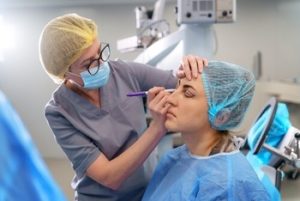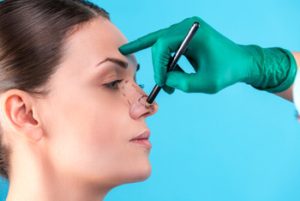How Much Does a Nose Job Cost?

If you have ever wondered how much does a nose job cost, you are not alone. Rhinoplasty, commonly referred to as a nose job, is one of the most popular cosmetic procedures in the world. People choose rhinoplasty for both aesthetic reasons, such as reshaping the nose to improve facial balance, and functional reasons, such as correcting a deviated septum or breathing difficulties. Because this surgical procedure can vary widely depending on several factors, it is helpful to understand what goes into the final cost of rhinoplasty before making a decision.
Understanding What Rhinoplasty Involves
A rhinoplasty procedure is a type of plastic surgery that reshapes or reconstructs the nose. It is typically performed by board-certified plastic surgeons who specialize in facial procedures. Depending on your needs, the surgery may be done for cosmetic reasons, functional concerns, or both. Some people undergo rhinoplasty to refine their nose shape, while others seek treatment for breathing function issues related to a deviated septum.
Types of Rhinoplasty Procedures
- Traditional rhinoplasty: This involves reshaping bone, cartilage, or tissue through either open rhinoplasty (where a small incision is made across the base of the nose) or closed rhinoplasty (with incisions hidden inside the nostrils).
- Revision rhinoplasty: A follow-up procedure to correct or refine results from a previous surgery. Revision rhinoplasty is usually more complex and can add to the overall cost.
- Functional rhinoplasty: Performed to address issues like nasal breathing or difficulty breathing due to structural problems. This procedure can sometimes be deemed medically necessary.
- Non surgical rhinoplasty: Also known as a liquid rhinoplasty or liquid nose job, this uses injectable fillers to alter the nose shape temporarily without undergoing surgery.
Average Rhinoplasty Costs
The average cost of rhinoplasty varies widely depending on the location, the surgeon’s experience, and the type of procedure. According to reports from the Society of Plastic Surgeons, the average cost of rhinoplasty in the United States typically ranges from $5,500 to $15,000. This range reflects surgeons’ fees only and does not account for anesthesia fees, surgical facility fees, or postoperative care. The final cost can be higher once additional fees are added.
Key Cost Factors to Consider
- Surgeon’s fee
The surgeon’s experience and reputation are among the biggest influences on rhinoplasty cost. Choosing the best surgeon, especially one who is board-certified, may increase the price but also provide greater assurance of natural-looking results. - Anesthesia fees
Since rhinoplasty surgery is typically performed under general anesthesia, this adds to the total cost. Anesthesia fees can range from several hundred to a few thousand dollars. - Surgical facility fees
Facility fees are part of the overall cost, whether the surgery is performed in a hospital, a private surgical suite, or an outpatient surgical center. - Geographic location
Rhinoplasty cost can vary widely depending on where you live. Large cities with higher living expenses often have higher prices for cosmetic procedures. - Postoperative care
Follow-up visits, medications, and special supplies for recovery all contribute to the total cost. - Additional procedures
Some patients combine rhinoplasty with other treatments such as chin augmentation to improve overall facial balance. This increases the total price.
Insurance and Rhinoplasty
A major factor in how much a nose job costs is whether health insurance will help cover it. Generally, insurance does not cover rhinoplasty when it is performed purely for cosmetic reasons. However, when the procedure is deemed medically necessary, such as in cases of functional rhinoplasty or septoplasty surgery for a deviated septum, insurance coverage may apply.
It is important to check with your insurance provider and understand whether your treatment plan qualifies. Insurance companies often require medical documentation showing difficulty breathing or other functional concerns before approving coverage.
Cosmetic vs Functional Coverage
- Cosmetic reasons: If the procedure is performed to change nose shape, enhance appearance, or address aesthetic concerns, it is not covered by health insurance.
- Functional reasons: Insurance may cover some or all of the costs if rhinoplasty is needed to improve breathing function or correct a crooked nose caused by injury or birth defect.
Non Surgical Alternatives and Costs
For people who want subtle changes without undergoing rhinoplasty surgery, non-surgical rhinoplasty may be an option. This cosmetic procedure uses injectable fillers to adjust the nose shape temporarily. The average cost of liquid rhinoplasty is much lower, often ranging between $600 and $1,500. While it does not require general anesthesia or surgical facility fees, the results are not permanent. Patients typically need follow up treatments every 6 to 18 months to maintain results.
The Importance of Choosing an Experienced Surgeon
 When considering the cost of a nose job, it is important not to focus solely on the price. Choosing a board-certified plastic surgeon with extensive experience ensures that the surgery is performed safely and produces natural-looking results. The surgeon’s experience is one of the main reasons costs vary widely depending on who performs the procedure.
When considering the cost of a nose job, it is important not to focus solely on the price. Choosing a board-certified plastic surgeon with extensive experience ensures that the surgery is performed safely and produces natural-looking results. The surgeon’s experience is one of the main reasons costs vary widely depending on who performs the procedure.
An experienced surgeon will also provide a detailed treatment plan that addresses both aesthetic and functional concerns. This includes evaluating your medical history, discussing expectations, and ensuring you are a good candidate for surgery.
What Makes Up the Final Cost?
The total cost of rhinoplasty is made up of several components:
- Surgeon’s fee
- Anesthesia fees
- Surgical facility fees
- Medical tests and imaging
- Postoperative care and follow-up visits
- Medications and supplies
Because there are many elements involved, the final cost may be higher than the average cost you see online. It is always best to request a complete quote from your surgeon that includes all additional fees.
Financing and Payment Options
Since rhinoplasty is a significant investment, many patients look for flexible ways to manage the expense. Some clinics accept financing plans, including credit approval through medical financing companies. This allows patients to spread the total cost over several months or years, making the procedure more accessible.
Questions to Ask Your Surgeon About Costs
When planning to undergo rhinoplasty surgery, it is important to go beyond just asking how much does a nose job cost. The overall cost of rhinoplasty can vary widely depending on several factors, and asking detailed questions will help you avoid unexpected additional fees later on. Here are some important questions to bring up during your consultation with a board certified plastic surgeon.
What is included in the total price of the rhinoplasty procedure?
The surgeon’s fee is just one part of the rhinoplasty cost. Make sure you ask whether the total cost includes anesthesia, surgical facility fees, pre operative tests, and post operative care. Some clinics provide an all inclusive package, while others may separate these charges. Understanding what is included in the total price ensures there are no surprises after your surgery.
Are anesthesia fees and surgical facility fees part of the quote?
Anesthesia and the use of a private surgical suite or accredited hospital can significantly increase the final cost. During your consultation, clarify if these anesthesia fees and surgical facility fees are already included in your quote. Asking this early on will give you a clearer idea of the overall cost and help you compare treatment plans between different plastic surgeons.
How many follow up visits are included in postoperative care?
Post operative care is a vital part of achieving natural looking results and ensuring proper healing after rhinoplasty surgery. Some surgeons include a set number of follow up visits in their initial pricing, while others may charge additional fees if more appointments are needed. Ask exactly how many follow up visits are covered in the total price and what happens if you require extra care during your recovery.
What happens if revision rhinoplasty is needed later on?
Although many patients achieve satisfying results with their first rhinoplasty procedure, some may need revision rhinoplasty to address aesthetic concerns or functional issues. Revision surgery is usually more complex and can increase the rhinoplasty cost. Ask your surgeon what their policy is if revision rhinoplasty becomes necessary. Do they offer reduced surgeon’s fees for corrective procedures, or will this be considered a completely new cosmetic surgery with a separate total cost?
Do you accept financing, and what are the credit approval requirements?
Because rhinoplasty cost is a significant investment, many patients explore financing options to make payments more manageable. Ask your surgeon whether they accept financing through medical credit providers or payment plans. Inquire about the credit approval process and whether there are interest free periods or flexible payment terms. Knowing this information will help you plan financially and ensure you are comfortable with the final cost before moving forward.
What Patients Can Expect After Surgery
Rhinoplasty is typically performed under general anesthesia and takes one to three hours, depending on complexity. Many patients go home the same day, but some may stay overnight if the procedure is extensive.
During recovery, patients are advised to keep their heads elevated, avoid strenuous activity, and attend follow-up visits as scheduled. Healing takes time, and final results may take up to a year to become fully visible. Postoperative care is essential in achieving natural-looking results and maintaining proper breathing function.
Weighing the Cost Against the Benefits
 The overall cost of rhinoplasty may seem significant, but many patients find the results to be life-changing. Whether performed for aesthetic reasons, functional concerns, or both, nose surgery can improve self-confidence, restore nasal breathing, and create better facial balance.
The overall cost of rhinoplasty may seem significant, but many patients find the results to be life-changing. Whether performed for aesthetic reasons, functional concerns, or both, nose surgery can improve self-confidence, restore nasal breathing, and create better facial balance.
While the upfront cost may be high, the long-term benefits often outweigh the expense. Patients who invest in an experienced surgeon usually achieve results that meet their goals with fewer risks of complications or the need for revision surgery.
Final Thoughts
So, how much does a nose job cost? The answer varies widely depending on the surgeon’s experience, location, type of rhinoplasty procedure, and whether the surgery is covered by health insurance. While the average cost of rhinoplasty in the United States ranges between $5,500 and $15,000, the final cost can be higher once anesthesia, facility fees, and other factors are included.
If you are considering rhinoplasty, it is essential to consult with a board-certified plastic surgeon. Ask about all the fees involved, explore financing options if needed, and make sure you fully understand your treatment plan. That way, you can move forward confidently, knowing the investment will support both your appearance and your breathing function.
References:
https://www.plasticsurgery.org/cosmetic-procedures/rhinoplasty/cost
https://www.carecredit.com/well-u/health-wellness/nose-job-cost-rhinoplasty-cost-nose-job-financing/
https://my.clevelandclinic.org/health/treatments/11011-rhinoplasty
https://www.nhs.uk/tests-and-treatments/cosmetic-procedures/cosmetic-surgery/nose-reshaping-rhinoplasty/
https://www.webmd.com/beauty/cosmetic-procedures-nose-job-rhinoplasty
https://www.buzzrx.com/blog/rhinoplasty-cost
https://www.goodrx.com/health-topic/procedures/nose-job-cost?srsltid=AfmBOopKuAAGO9F8KQrfBTQhdu642kXWyG-hTHcOtKPXKAG-Y_j8TsWs
https://www.nebraskamed.com/health/plastic-surgery/rhinoplasty/considering-a-nose-job-what-you-need-to-know-about-rhinoplasty
https://www.bupa.co.uk/health-information/surgery-and-procedures/rhinoplasty

